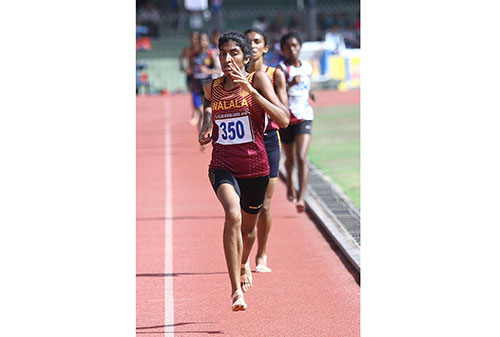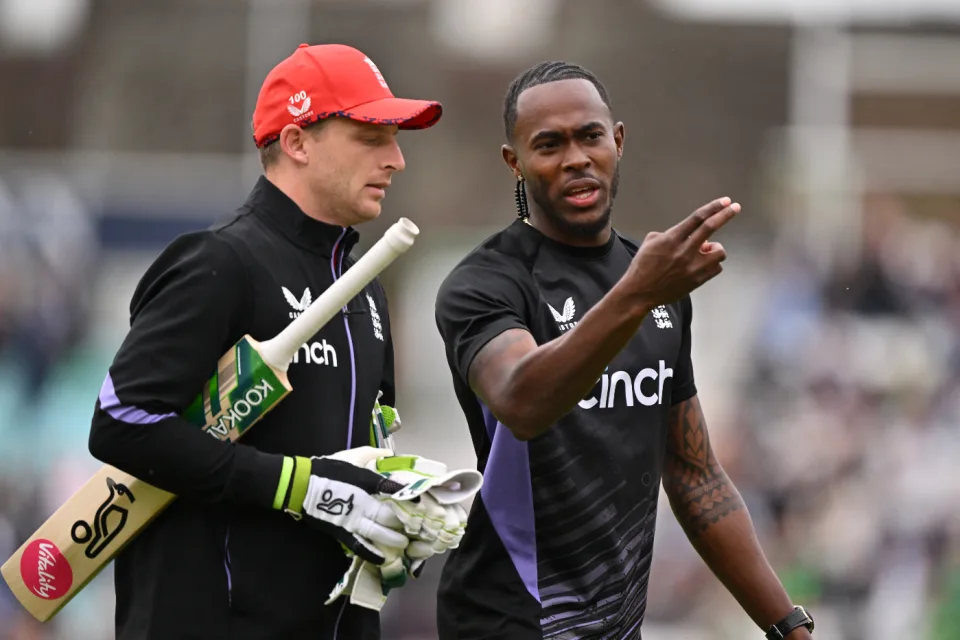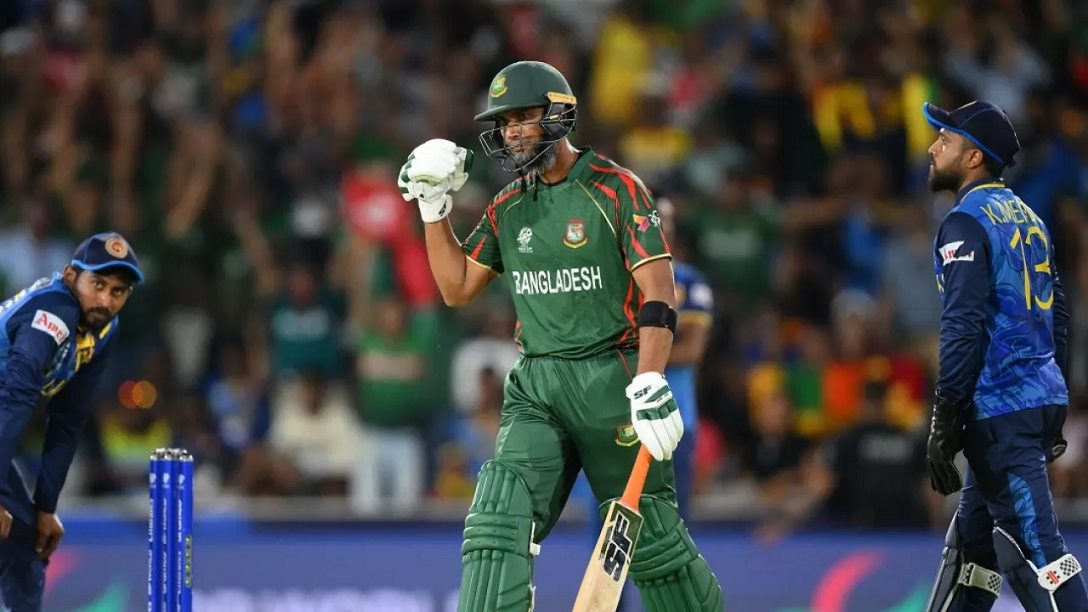Sports
Of Sports Schools and schools sports

The absence of infrastructure at Ratnayake Central was compensated by well laid out individualized training plans for each sports scholarship holder. It was the key to Ratnayake Central dominating All Island Schools Games.
by Reemus Fernando
Introduced to the education structure with the objective of nurturing future sportsmen and women of Sri Lanka, the two dozen Sports Schools doting the island from north to south have lasted three decades without going through a proper scrutiny. Names of majority of Sports Schools are not even heard of when the All Island Schools Games are held annually. While semi government, private and international schools have gone on to dominate school sports, some half a dozen Sports Schools have survived the gross negligence of education authorities and storms of change that have swept through the schools set up during the last two decades to perform relatively well.
The success of these few schools were purely due to the dedication of a few qualified individuals who had gone out of their way to uplift standards. With the Education Ministry and the Sports Ministry preparing to upgrade the standard of Sports Schools around the country it should be noted that while addressing the infrastructure needs, emphasis should also be given to appoint qualified and dedicated officials to take responsibilities of these institutions.
When the Sports Schools were started in 1989 with the Ibbagamuwa Central as the first such school the project was overseen by an Education Ministry official who had obtained his sports education qualifications from a reputed institution in Germany. The decisions relating to physical education and sports in the Ministry of Education had his influence. Results were available to see in the form of success in athletics at Asian level during the late 90s and early 2000s with athletes who came through that system later graduating with the help of top level coaches. Ministry of Education has a handful of qualified individuals who are operating as instructors or coaches but at decision making level they do not have a say.
Infrastructure verses qualified officials
Ratnayake Central Walala, the only Sports School to have maintained the supremacy in track and field sports right throughout does not have a proper ground to date, not even a proper 200 metres track. The absence of infrastructure was compensated by well laid out individualized training plan for each sports scholarship holder. Susantha Fernando who was instrumental in guiding the destiny of many top level athletes also had an eye for talent identification and made sure the school had a continuous supply of raw talent every year. The school boasts of Asian Junior Athletics Championships medallists to Olympic participants to South Asian Games medallists. Fernando’s training was responsible for the majority of medals won at the last South Asian Games as well.
Sumana Balika, Ratnapura was probably the next best Sports School in the girls category taking in to consideration the number of times the school became runners-up to Ratnayake Central. Once again it was the coaching qualifications of an individual that mattered. Sumana Balika excelled as long as R.B. Palitha was their instructor. Seevali Central the other Sports School of Ratnapura had a similar experience. They could dominate as long as Palitha was their mentor.
Henegama Central did well during Prabath Fernando’s stint and Rajasinghe Central is the only Sports School in the Western Province to maintain its stature as a Sports School with Jayalal Ratnasuriya, a qualified World Athletics coach overseeing the progress of its athletes. Vijitha Central, Dickwella and Kuliyapitiya Central are among few other Sports Schools to have made their presence felt during the last several years.
No amount of infrastructure development can make a Sports School competitive. Once a stronghold of Sri Lanka’s national sport, volleyball, the name of Sports School Senanayake MV, Madampe is hardly heard these days. Ibbagamuwa Central, the first Sports School is not functioning though the school’s instructor trains a few high jumpers. Some of the 23 Sports Schools are either not operating at all or are performing below par. Had there been qualified individuals in the Ministry of Education to scrutinies these institutions.
Talent identification failures and emergence of private schools
One of the brightest prospects to emerge from the schools system during the last few years is Asian Junior Athletics Championship gold medallist Aruna Dharshana. Hailing from Seruwila, Trincomalee, Dharshana bypassed several Sports Schools in two other districts to find refuge at Weera Keppetipola MV, Akuramboda. He was lucky to have the guidance of Asanka Rajakaruna at that Sports School. Wasn’t there a system to identify his talent at his home place? Trincomalee is home to two Sports Schools.
While the standards of Sports Schools were crumbling, a good number of private and government schools had given priority to sports and athletics in particular. A number of schools in Colombo and Kandy and International Schools elsewhere started investing heavily on sports during the last one and half decades. Sports training at these schools are no longer overseen by officials attached to Ministry of Education. For example, the track and field coach of a leading government school in Colombo is a sports officer of the Ministry of Sports and a qualified World Athletics coach and instructor. These schools have been responsible in producing many athletes to represent Sri Lanka at junior Asian and junior World level. The emergence of these schools has also given rise to an unprecedented talent exodus from outstations.
A particular school in Colombo launched a recruitment drive during the last three years to an extent that that school now has the luxury of winning the All Island Schools track and field title with their second string. Some of these schools hellbent on winning have gone on to the extent of jeopardizing the education of these recruits from outstations. Many junior athletes recruited from outstations find themselves out of place in the midst of their English-speaking classmates and hardly attend classes. They are guaranteed jobs when they are recruited and find education non essential. To be continued……………..
Sports
England face Australia in the battle of champions

The first truly heavyweight clash of this expanded T20 World Cup format comes freighted with both history and subplots. A rematch of the 2010 World T20 final at Kensington Oval, the match pits Jos Buttler’s defending champions – who are aiming to become the first team to retain the trophy – against the Australian winning machine, victors at the 2021 edition and current world title-holders in Test and ODI cricket. And that’s before you throw in the Ashes for afters.
Already there is added pressure on England, after the rain in Bridgetown led to a share of the points in their opener against Scotland (and that having conceded 90 runs from 10 overs without taking a wicket in a tepid bowling display). Lose to their oldest rivals and it will leave their Super 8 prospects open to being waylaid by the perils of net run-rate calculations, or worse.
The Scotland match was the third abandonment in five suffered by England, after a rain-affected home series against Pakistan, which has clearly hampered their readiness for this campaign after almost six months without playing T20 together. It does not take much for a side to click in this format – and England looked in decent shape when they did get on the field against Pakistan – but Buttler will be anxious for things to go their way on Saturday, if only to avoid further questions referencing the team’s disastrous ODI World Cup defence last year.
Australia, under the laidback leadership of Mitchell Marsh would love nothing more than to add to the English sense of jeopardy – having helped bundle them out of the tournament in India on the way to taking the crown. Their head to head record is less impressive in T20 however, with England having won six of the last seven completed encounters, as well as that 2010 final.
Despite a wobble with the bat, Australia avoided mishap against Oman earlier in the week, the experience of David Warner and Marcus Stoinis shining through in difficult batting conditions. Surfaces in the Caribbean – not to mention those games staged in the USA – have already had teams scratching their heads; rather than the “slug-fest” England had prepared for, following a high-scoring tour of the Caribbean in December, it looks as if boxing smart may be the way to go.
Speaking of Warner, this could be the last time he faces up against England in national colours – and another match-winning contribution would likely reduce the chances of them meeting again in the knockouts. On the other side of the card is Jofra Archer, fresh from an emotional maiden outing at Kensington Oval and ready to take on Australia for the first time in any format since 2020. Can Mark Wood fire up England’s campaign, as he did during last summer’s Ashes? Will Pat Cummins be back to harass the old enemy once again? Seconds out, it’s almost time to rumble.
Cummins is set to return after being rested for the Oman game, which saw Mitchell Starc leave the field with cramp. Starc is understood to be fine and could keep his place – which would likely see Nathan Ellis miss out. Marsh is still not fit to bowl, with Australia likely to continue with the allrounder combination of Stoinis and Maxwell to give them cover.
Australia (probable XI): David Warner, Travis Head, Mitchell Marsh (capt), Glenn Maxwell, Marcus Stoinis, Josh Inglis (wk), Tim David, Pat Cummins, Nathan Ellis/Mitchell Starc, Adam Zampa, Josh Hazlewood
The one change England may consider is Reece Topley coming in for Wood, with the expectation that there will be some rotation among the seamers through the course of the tournament.
England (probable XI): Phil Salt, Jos Buttler (capt & wk), Will Jacks, Jonny Bairstow, Harry Brook, Liam Livingstone, Moeen Ali, Chris Jordan, Jofra Archer, Adil Rashid, Reece Topley/Mark Wood
[Cricinfo]
Sports
South Africa up against their bogey team in batter-unfriendly New York

Once is coincidence, twice is a clue, and three times is proof.
To paraphrase Agatha Christie, that is the narrative around South Africa’s meeting with Netherlands at this T20 World Cup.
The Dutch beat South Africa at the 2022 tournament and ended their semi-final hopes in a match where South Africa appeared to be sleep walking, and then beat them again at the 2023 ODI World Cup, where they exposed South Africa’s vulnerability in the chase. If they to do the treble, not only will Netherlands take the lead in Group D, but they will offer conclusive evidence of the threat they pose to Full Members, especially South Africa.
Of course, it will take some doing after South Africa’s opening performance against Sri Lanka, where they reduced their opposition to their lowest T20I total and chased it down in fairly straightforward fashion thanks to the most stable middle-order of their white-ball era. In Aiden Markram, Tristan Stubbs, Heinrich Klaasen and David Miller, South Africa have bankers and big-hitters and, for this match, they also have the advantage of experience. They’ve already played at Eisenhower Park, and have first-hand knowledge that run-scoring doesn’t come easily;Klassen said they are prepared to use their “cricket brains” and play “smarter cricket”.
But the conditions could be good news for Netherlands, who are not naturally a line-up of big hitters and build their innings on a foundation of turning ones into twos. In other words, they tend to take a slightly more conservative approach to batting, which may work well here, but they’ll be wary of the uneven bounce of the surface and will have to come up with plans to counterattack especially against South Africa’s seamers. Their own bowlers were exemplary in Dallas and will look to build on that performance against a line-up that will likely be more proactive than Nepal’s, but who they have managed to keep quiet not once, but twice in the past. Third time’s the charm, they say.
Anrich Nortje’s stunning return to form against Sri Lanka means South Africa may not have to tinker with the bowling combination, and Gerald Coetzee and Tabraiz Shamsi may have to wait their turns to get a game. The batting line-up should be unchanged, with no space for Ryan Rickelton yet.
South Africa: Quinton de Kock (wk), Reeza Hendricks, Aiden Markam, Tristan Stubbs, Heinrich Klaasen (wk), David Miller, Marco Jansen, Keshav Maharaj, Kagiso Rabada, Ottneil Baartman, Anrich Nortje
Conditions in New York may tempt Netherlands to include an extra seamer and they have Kyle Klein in their squad. But it could come at the expense of a shortened batting line-up and they may not want to risk that.
Netherlands: Michael Levitt, Max O’Dowd, Vikramjit Singh, Sybrand Engelbrecht, Scott Edwards (capt, wk), Bas de Leede, Teja Nidamanuru, Logan van Beek, Tim Pringle, Paul van Meekeren, Vivian Kingma
[Cricinfo]
Latest News
Mustafizur, Rishad, Hridoy dazzle in Bangladesh’s tight two-wicket win over Sri Lanka

Nuwan Thushara’s last over brought Sri Lanka screaming back into the match,as he first bowled Rishad Hossain, and then nailed Taskin Ahmed in front of the stumps with a pinpoint swinging yorker. This left Bangladesh eight wickets down, with 12 runs still to get.
However, the experienced Mahmudullah was at the crease for Bangladesh, and despite some further nervy moments, pushed Bangladesh across the line off the last ball of the 19th over.
But this was a match chiefly decided by Bangladesh’s own outstanding bowling. Mustafizur Rahman was the best among them, using shorter lengths and his cutters efficiently, to claim figures of 3 for 17. Rishad Hossain’s three-for through the middle overs also kept Sri Lanka quiet.
Mustafizur was instrumental in Sri Lanka’s downward spiral through the middle overs, which culminated in a crash-and-burn end. Ultimately, their inability to find boundaries, or even rotate strike against good Bangladesh bowling resulted in their downfall. A score of 125 for 9 always seemed poor on a decent pitch, even if their bowlers made a match of it in the end.
Brief scores:
Bangladesh 125 for 8 in 19 overs (Towhid Hridoy 40, Litton Das 36; Dhanajaya de Silva 1-11, Nuwan Thushara 4-18, Wanidu Hasaranga 2-32, Matheesha Pathirana 1-27) beat Sri Lanka124 for 9 in 20 overs (Pathum Nissanka 47, Dhananjaya de Silva 21; Tanzim Hasan Sakib 1-24, Taskin Ahmed 2-25, Mustafizur Rahman 3-17, Rishad Hossain 3-22) by two wickets
[Cricinfo]





















